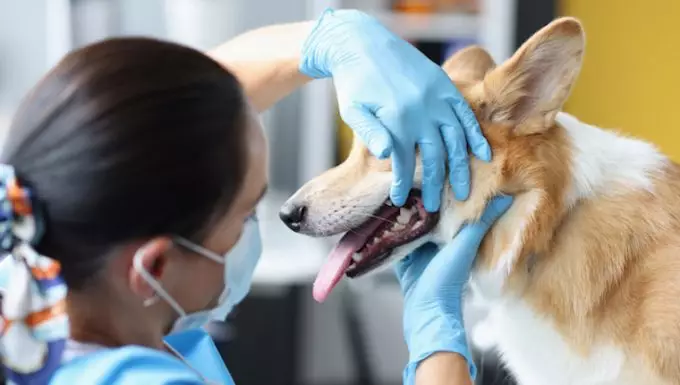Gingiva squamous cell carcinoma (SCC) is a prevalent form of oral cancer that affects dogs, representing a significant concern for pet owners and veterinarians alike. As the most commonly diagnosed mouth cancer in canines, this condition requires urgent attention to prevent metastasis and ensure the dog’s quality of life. While SCC can arise in various locations, this article will primarily focus on its occurrence in the gingiva, or gums, and will explore its symptoms, potential causes, and treatment options.
Identifying the signs of gingiva squamous cell carcinoma is crucial for early intervention. The symptoms can vary greatly among affected dogs and may manifest in several ways. Common indicators include excessive drooling, noticeable weight loss, persistent bad breath, and difficulty eating. A dog affected by SCC may also exhibit blood around the mouth, loose teeth, a swollen jaw, or abnormal growths in its oral cavity. Coughing can occur if the cancer has progressed. Observing any of these symptoms should prompt immediate veterinary consultation.
The exact cause of gingiva squamous cell carcinoma in dogs remains elusive, classified as idiopathic, meaning it arises without a clear known origin. Despite this ambiguity, certain factors have been identified that may contribute to the disease’s development. Exposure to harmful chemicals, radiation, and chronic infections are frequently mentioned as possible risk factors. Additionally, certain dog breeds, including Beagles, Bull Terriers, Dalmatians, Basset Hounds, Poodles, Schnauzers, and Kerry Blue Terriers, appear to be predisposed to this type of cancer. This breed predilection underlines the importance of regular veterinary check-ups, especially for those at greater risk.
A thorough veterinary assessment is vital for an accurate diagnosis of gingiva squamous cell carcinoma. The diagnostic process typically starts with a detailed discussion about the dog’s symptoms and medical history. The veterinarian will conduct a comprehensive physical examination focusing on the oral cavity. Blood and urine tests may also be necessary to evaluate the dog’s overall health and rule out other conditions. However, the definitive diagnosis often relies on biopsy samples from any abnormal growths. This tissue examination helps discern the presence of cancerous cells and guides subsequent treatment choices.
Treating gingiva squamous cell carcinoma varies based on the tumor’s size and severity. For less aggressive tumors, techniques like cryosurgery, which freezes and removes small cancerous masses, may be sufficient. In cases of larger tumors, more complex surgical interventions might be required, potentially involving the removal of sections of the jaw. Furthermore, aggressive treatments such as radiation and chemotherapy could be recommended, particularly when the cancer has significantly progressed.
An innovative approach—the photodynamic therapy—utilizes surgical lasers to target and eliminate growths, providing a less invasive alternative for specific cases. Regardless of the chosen treatment plan, post-operative care plays a crucial role in the recovery process. Creating a calm, comfortable home environment is essential for healing, and dietary modifications may be necessary to accommodate any oral limitations. A veterinarian can assist in developing a nourishing and suitable diet during this recovery phase.
Caring for a dog diagnosed with gingiva squamous cell carcinoma poses emotional and physical challenges. Pet owners must remain vigilant in monitoring symptoms and assisting their dogs through treatment and recovery. The support of a compassionate veterinary team can make a significant difference in managing this condition. If you have personal experience with a dog suffering from SCC, sharing insights on care and veterinary support can help others navigate similar situations. Effective communication with your veterinarian is vital, ensuring your dog receives the most appropriate and comprehensive care possible.

